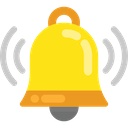gbtr6
Jedi Trainee
Offline
Hi, hoping I can get some help here. Saturday took my six to a guys house for a shop tour and get together. There were six perfect big Healeys there, my six, an XKE, and an MGB. When it was time to go, everyone got in and started and drove off. Except me. Up til now, I had the best running 6 there was. Only needing to replace front shocks.
The guy whose shop we were at has a son that is an electrical engineer. He got out his tester and we tried to find the issue. My electric fan is set to come on at the first turn of the key, but it didn't come on either. I suspected the relay as I had some issues before when the starter would engage on the first turn of the key, not fully turning it to start. I replaced it and all was well. So, we resorted to rapping on the relay when I was cranking the engine. It would catch only when I released the key. It would start, and the fan was running too. He followed me home, and it ran fine.
The only issues I had were no turn signals, and weak brake lights. Also my gauges were intermittent. My voltage also stayed at 11 volts when it usually is 13.
Would a bad alternated cause any of this? I had a spare relay and swapped it. No joy. Had my wife rap on that on and the original one. No joy either. I am going to take the alternator to get tested.
Any suggestions? Also, when the key is off, what should the terminals on the relay read, and when cranking, what terminals are hot and what should they read. Still have some summer left and I want to enjoy it in the Six.
Thanks,
Perry
The guy whose shop we were at has a son that is an electrical engineer. He got out his tester and we tried to find the issue. My electric fan is set to come on at the first turn of the key, but it didn't come on either. I suspected the relay as I had some issues before when the starter would engage on the first turn of the key, not fully turning it to start. I replaced it and all was well. So, we resorted to rapping on the relay when I was cranking the engine. It would catch only when I released the key. It would start, and the fan was running too. He followed me home, and it ran fine.
The only issues I had were no turn signals, and weak brake lights. Also my gauges were intermittent. My voltage also stayed at 11 volts when it usually is 13.
Would a bad alternated cause any of this? I had a spare relay and swapped it. No joy. Had my wife rap on that on and the original one. No joy either. I am going to take the alternator to get tested.
Any suggestions? Also, when the key is off, what should the terminals on the relay read, and when cranking, what terminals are hot and what should they read. Still have some summer left and I want to enjoy it in the Six.
Thanks,
Perry

 Hi Guest!
Hi Guest!
 smilie in place of the real @
smilie in place of the real @
 Pretty Please - add it to our Events forum(s) and add to the calendar! >>
Pretty Please - add it to our Events forum(s) and add to the calendar! >> 
